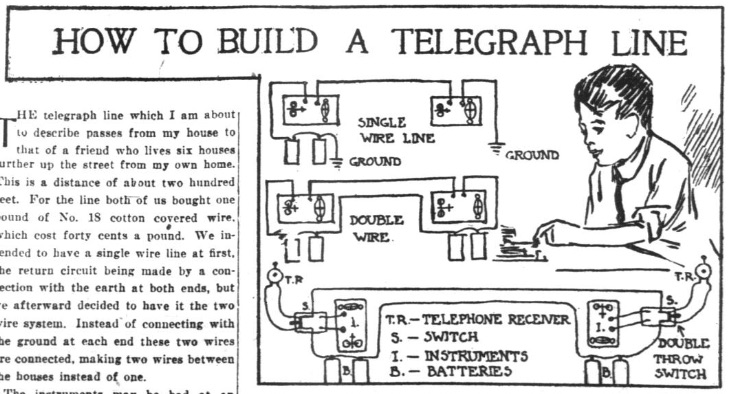
The article below, originally published in 1911, describes how one man set up a telegraph line between his house and a friend’s house so that they could practice Morse code.

How to Build a Telegraph Line
The telegraph line which I am about to describe passes from my house to that of a friend who lives six houses further up the street from my own home. This is a distance of about two hundred feet of No. 18 cotton covered wire which costs forty cents a pound. We intended to have a single wire line at first, the return circuit being made by a connection with the earth at both ends, but we afterward decided to have it the two wire system. Instead of connecting with the ground at each end these two wires are connected, making two wires between the houses instead of one.
The instruments may be had at an electrical store for $2 a piece. When connecting the batteries with the line one must be careful not to have the carbon element of the battery connected with the other carbon in the other house, because no current would flow, or not to that with the zinc element. Connect them so that the zinc on one battery is connected with the carbon on another battery and the zinc pole on the same battery connected with the carbon on the next, and so on.
We are going to fix our line so we can talk over the wire as well as telegraph. Then, if when practicing telegraphy we do not understand we can signal each other by making two dots, dash, two dots on the telegraph, which will mean to throw over the switch which will connect a pony receiver with another receiver in the other house. One will talk while the other listens, and when he gets through talking he will put the receiver to his ear and listen while the other boy answers him.
Small single pole switches may be used at both ends of the line to “short circuit” your own instrument when you want to practice alone, but they must be open when you practice together.
Source: The Washington herald. (Washington, D.C.), 29 Oct. 1911.

